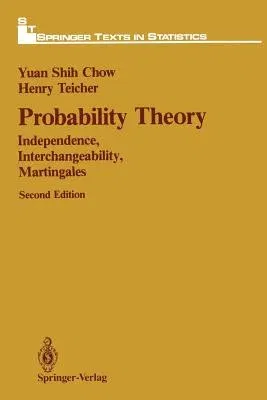Yuan S Chow
(Author)Probability Theory: Independence, Interchangeability, Martingales (Softcover Reprint of the Original 2nd 1988)Paperback - Softcover Reprint of the Original 2nd 1988, 2 February 2012

Qty
1
Turbo
Ships in 2 - 3 days
In Stock
Free Delivery
Cash on Delivery
15 Days
Free Returns
Secure Checkout
Part of Series
Springer Texts in Statistics
Print Length
467 pages
Language
English
Publisher
Springer
Date Published
2 Feb 2012
ISBN-10
1468405063
ISBN-13
9781468405064
Description
Product Details
Authors:
Book Edition:
Softcover Reprint of the Original 2nd 1988
Book Format:
Paperback
Country of Origin:
NL
Date Published:
2 February 2012
Dimensions:
23.39 x
15.6 x
2.49 cm
ISBN-10:
1468405063
ISBN-13:
9781468405064
Language:
English
Location:
New York, NY
Pages:
467
Publisher:
Series:
Weight:
675.85 gm

